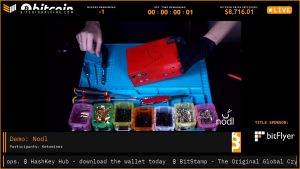Introduction to Smart Contracts and DeFi Lending
At its core, a smart contract is a self-executing contract with the terms of the agreement directly written into code. This code resides on a blockchain network, enabling automated execution without the need for intermediaries. DeFi lending, on the other hand, refers to the lending and borrowing of digital assets using decentralized platforms.How Smart Contracts Work
Smart contracts leverage blockchain technology to create a decentralized and trustless environment. They operate based on predefined conditions, triggering specific actions when those conditions are met. The immutability and transparency of blockchain ensure that the terms of the contract are adhered to without the need for human intervention.Automated and Trustless Transactions
Smart contracts act as self-executing agreements that automatically execute lending operations once predefined conditions are met. Borrowers and lenders can interact directly without relying on intermediaries, eliminating the need for traditional financial institutions. This automation streamlines the lending process, reduces administrative overhead, and enhances transaction efficiency.The Role of Smart Contracts in DeFi Lending

Immutable and Transparent Record-Keeping
Smart contracts record lending agreements on a blockchain, creating an immutable and transparent ledger of transactions. Every lending activity, including loan origination, repayment schedules, interest rates, and collateral details, is stored in a tamper-proof manner. This transparency instills trust among participants, ensuring that the terms and conditions of the lending agreement are followed without the possibility of alteration.Collateralized Lending and Automated Liquidations
Smart contracts facilitate collateralized lending, wherein borrowers provide digital assets as collateral to secure loans. Through smart contracts, lenders can programmatically enforce collateral requirements, ensuring that borrowers maintain sufficient collateral value throughout the loan duration. In the event of default or collateral devaluation, smart contracts can automatically trigger liquidation mechanisms to recover the outstanding loan amount, protecting lenders’ interests.Decentralized Risk Assessment and Pricing
Smart contracts enable decentralized risk assessment by utilizing various data sources to evaluate borrowers’ creditworthiness. This includes analyzing on-chain transaction history, credit scores, and other relevant information. Based on this assessment, smart contracts can determine interest rates and loan terms, ensuring fair and efficient pricing without human bias or discriminatory practices.Understanding the Mechanics of Smart Contract-Based Lending
In a smart contract-based lending system, borrowers can secure loans by providing collateral in the form of digital assets. The collateral is locked in the smart contract, and once the loan is repaid, the collateral is released. This automated process removes the need for manual verification and streamlines the lending process.Popular Smart Contract Platforms in DeFi Lending
Let’s explore some of the most popular smart contract platforms in the realm of DeFi lending.- Ethereum (ETH): Ethereum is undoubtedly the dominant player in the DeFi space, and it has established itself as the go-to platform for DeFi lending. With its robust and programmable smart contract capabilities, Ethereum hosts a multitude of lending protocols and dApps. Its large user base and extensive developer community contribute to its continued success in the DeFi lending arena.
- Binance Smart Chain (BSC): Binance Smart Chain has emerged as a strong competitor to Ethereum in recent times. Known for its high transaction throughput and low fees, BSC has attracted numerous DeFi projects, including lending platforms. The compatibility of BSC with the Ethereum Virtual Machine (EVM) allows for seamless integration of existing Ethereum-based DeFi lending protocols onto BSC.
- Solana (SOL): Solana is a fast and scalable blockchain platform that has gained attention for its high-performance smart contracts. Its ability to handle a vast number of transactions per second makes it suitable for DeFi lending, where speed and efficiency are crucial. Solana’s growing ecosystem and developer-friendly environment make it an attractive choice for building lending protocols.
- Avalanche (AVAX): Avalanche is a decentralized platform designed for high-speed transactions and low fees. Its consensus mechanism, Avalanche consensus, enables quick finality and efficient processing of smart contracts. With its focus on scalability and interoperability, Avalanche offers potential for innovative DeFi lending solutions.
- Polkadot (DOT): Polkadot stands out for its multi-chain framework, which allows for cross-chain communication and interoperability. This feature makes Polkadot an appealing option for DeFi lending platforms seeking to interact with different blockchain networks. The governance and upgradeability aspects of Polkadot provide flexibility for evolving lending protocols.
Challenges and Risks in Smart Contract-Based Lending
Let’s explore some of the key challenges and risks in smart contract-based lending.- Smart Contract Vulnerabilities and Exploits: Smart contracts, like any other software, can contain vulnerabilities that may be exploited by malicious actors. Coding errors, security flaws, or design weaknesses in the smart contract can lead to unauthorized access, theft of funds, or manipulation of lending terms. Thorough security audits and continuous monitoring are necessary to identify and mitigate potential vulnerabilities.
- Regulatory Concerns and Legal Implications: The regulatory landscape surrounding smart contract-based lending is still evolving in many jurisdictions. Legal frameworks and compliance requirements may vary, leading to uncertainties and potential conflicts. Users should understand the legal implications of participating in smart contract-based lending and ensure compliance with relevant laws and regulations to mitigate legal risks.
- Market Risks and Volatility: Smart contract-based lending is exposed to market risks and volatility associated with the underlying digital assets. Fluctuations in the value of collateral or borrowed assets can impact the borrower’s ability to repay the loan and the lender’s ability to recover the collateral. Users should be prepared for market fluctuations and assess the associated risks before engaging in lending activities.
- Liquidity Risks: Smart contract-based lending relies on sufficient liquidity to match borrowers with lenders. Insufficient liquidity can lead to challenges in loan origination, loan repayment, or the liquidation of collateral. Users should consider the liquidity of the lending platform and assess the potential impact of illiquid markets on their lending activities.
Future Prospects and Innovations in DeFi Lending
Let’s explore the future of DeFi lending and the advancements that lie ahead.- Integration of Oracles for Real-World Data: One of the key areas of innovation in DeFi lending is the integration of oracles. Oracles provide access to real-world data, enabling smart contracts to interact with external information. Integrating oracles into lending protocols can enhance risk assessment, pricing mechanisms, and overall lending efficiency. By incorporating real-time market data, credit scores, and collateral valuations, lenders can make more informed lending decisions.
- Cross-Chain Interoperability: Cross-chain interoperability is another area with significant prospects for DeFi lending. As the number of blockchain platforms continues to grow, allowing assets from different chains to interact seamlessly becomes crucial. Cross-chain interoperability enables borrowers to utilize assets from various blockchains as collateral and lenders to access a broader range of lending opportunities. Protocols such as Polkadot and Cosmos are actively working towards enabling interoperability, opening up new possibilities for DeFi lending.
- Improved User Experience and Scalability: Enhancing the user experience and scalability of DeFi lending platforms is a priority for future developments. User interfaces and interactions will become more intuitive, making it easier for individuals to participate in lending activities. Additionally, scalability solutions like layer-two protocols and sidechains aim to address the limitations of current blockchain networks, enabling faster transaction processing and lower fees. Improved user experience and scalability will contribute to the mass adoption of DeFi lending.
- Risk Mitigation Strategies: As DeFi lending expands, the development of robust risk mitigation strategies will be essential. Innovations in risk management protocols, collateralization techniques, and insurance solutions will help safeguard lenders and borrowers from potential risks. Moreover, these strategies may involve diversified collateral pools, automated liquidation mechanisms, and decentralized insurance options. Building trust and confidence in the security and stability of DeFi lending will be crucial for its long-term sustainability.
Conclusion
Therefore, smart contracts are the cornerstone of DeFi lending, enabling efficient, transparent, and secure transactions in a decentralized manner. As the adoption of blockchain technology and DeFi continues to grow, the role of smart contracts in lending will become increasingly prominent. Moreover embracing this technology opens up new opportunities for individuals to participate in a global and inclusive financial system.FAQs
Can smart contracts be modified or tampered with after deployment?Smart contracts are immutable once deployed on the blockchain, meaning they cannot be modified or tampered with.
How do smart contracts ensure the security of funds in DeFi lending?
Smart contracts utilize encryption and cryptographic techniques to secure funds and eliminate the need for trust in intermediaries.Are smart contracts legally enforceable?
The legal enforceability of smart contracts varies across jurisdictions. However, their self-executing nature and transparency can streamline dispute resolution processes.What are the risks associated with borrowing in DeFi lending?
Borrowing in DeFi lending carries the risk of liquidation if the value of the collateral drops significantly. It is essential to understand the risks before participating.How can I get started with DeFi lending using smart contracts?
To get started, you can explore various lending platforms built on blockchain networks like Ethereum and follow the instructions provided to participate in lending activities.









